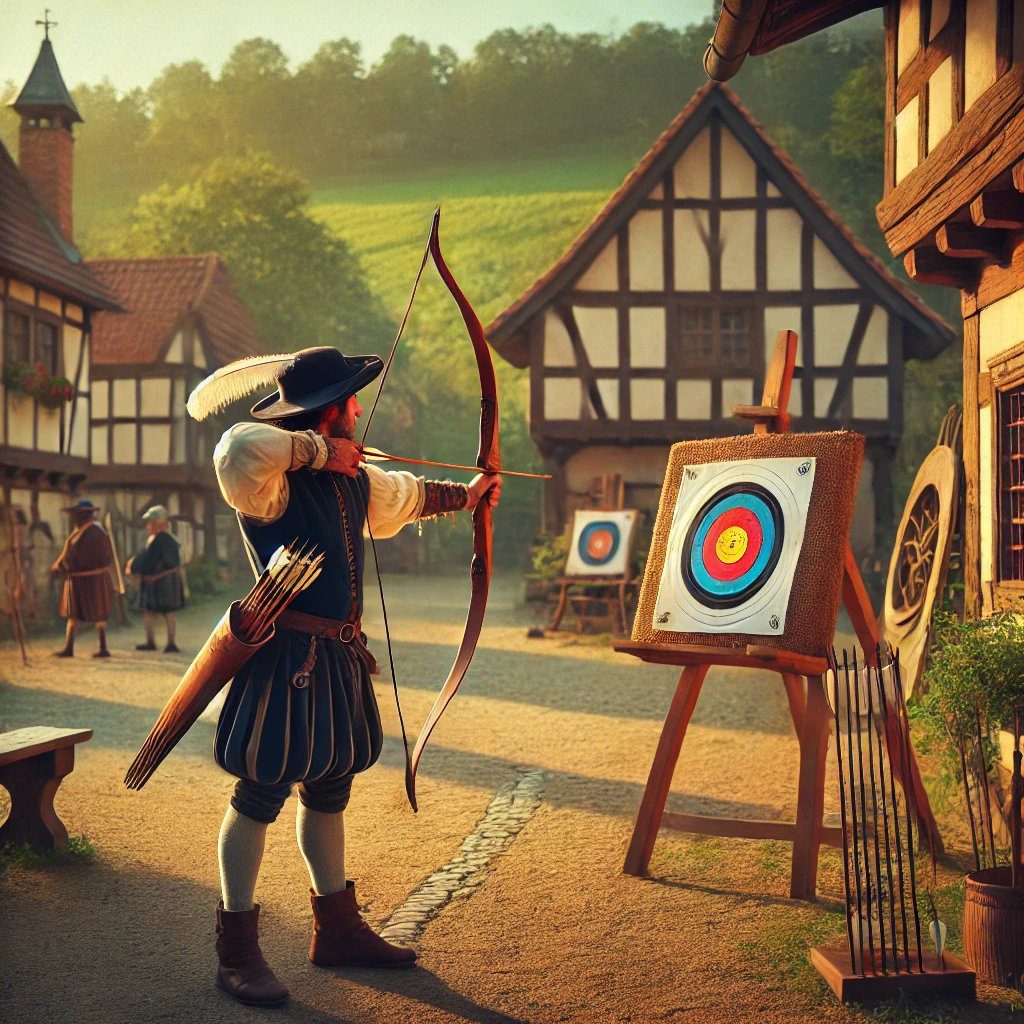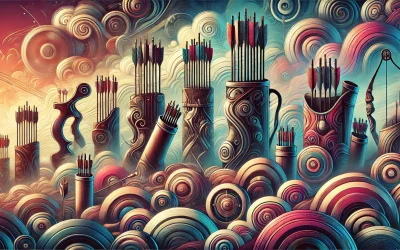The Renaissance (14th to 17th centuries) was a time of profound transformation in Europe. Amidst the flourishing of art, science, and exploration, archery found itself at a crossroads. Once the linchpin of medieval warfare, the bow began to cede its dominant role to emerging technologies, while simultaneously finding a new life in the realms of recreation, culture, and ceremony. Let us delve into the fascinating journey of archery during this transformative era.
Military Archery: The Twilight of an Era
Decline in Warfare
The battlefield dominance of the longbow, immortalised in battles like Agincourt (1415), began to wane during the Renaissance. Advances in gunpowder weaponry, such as the arquebus and musket, rendered even the mightiest bows less practical. While crossbows, valued for their ease of use and power, lingered for a time, they too were gradually replaced by firearms.
Specialised Units
Yet, the bow was not wholly forgotten. In England, laws mandating regular archery practice ensured a reserve of skilled bowmen, valued in local militias. These archers, while no longer the stars of grand military campaigns, still played roles in regional conflicts and as a bulwark against potential invasions.
Naval Archery
On the high seas, archery briefly held its own. Before firearms became standard, archers were a practical choice for naval skirmishes, where their ability to fire rapidly and accurately from ship decks offered distinct advantages.
Recreation and Competition: The Bow Reimagined
Archery Guilds
As the bow stepped back from the battlefield, it entered the town square and the festival ground. Across Europe, archery guilds flourished in regions such as England, Flanders, and France. These guilds preserved the traditions of the bow, hosting tournaments that showcased skill, precision, and camaraderie. Competitors often shot at marks or intricate targets, reflecting the Renaissance obsession with artistry and detail.
A Pastime for All Classes
Archery became a beloved pastime, appealing to nobles and commoners alike. For the wealthy, it offered a blend of physical exercise and mental discipline, aligning with ideals of the gentleman-scholar. Nobles frequently hosted archery contests at courtly events, while villagers gathered for informal competitions during local festivals.
Cultural and Symbolic Significance
Legends and Heroes
Archery retained its grip on the European imagination, woven into myths and legends. Heroes like England’s Robin Hood and Switzerland’s William Tell were celebrated for their unmatched skill with the bow, embodying ideals of justice, precision, and independence. These tales, retold and embellished during the Renaissance, kept the mystique of the archer alive.
Art and Allegory
In Renaissance art, archers were not mere warriors but symbols. Cupid’s bow and arrow became iconic representations of love, while martial archers symbolised the human struggle for dominance and control. Artists like Albrecht Dürer depicted archery with both technical accuracy and allegorical depth, blending classical influences with contemporary themes.
Technological and Artistic Innovations
Bowyer’s Craft
Bow-making evolved, as artisans refined techniques and incorporated new materials. Inspired by composite bows from earlier eras, Renaissance bowyers produced more reliable and aesthetically pleasing designs. Arrows, too, were crafted with care, often adorned with decorative fletching for ceremonial purposes.
The Printing Press’s Influence
The advent of the printing press revolutionised the dissemination of knowledge. Manuals and treatises on archery circulated widely, offering guidance on technique, equipment maintenance, and even the philosophy of archery. This democratisation of knowledge ensured the bow’s legacy reached a broader audience.
A Global Perspective
While archery declined in Europe as a military force, it continued to thrive elsewhere:
- Ottoman Empire: Masters of the composite bow, Ottoman archers developed techniques for astonishing feats of long-distance shooting.
- Japan: Kyudo, the “Way of the Bow,” emphasised archery’s spiritual and aesthetic dimensions, elevating it to an art form.
- India: Archery remained central to warfare, celebrated in courtly traditions and epic narratives.
The Bow’s Renaissance Legacy
The Renaissance was a time of reinvention for archery. From its fading prominence on the battlefield to its rise as a cherished pastime and cultural symbol, the bow adapted to the changing tides of history. In the hands of guild members, noble competitors, and mythic heroes, archery found a new life, embodying the ideals of precision, discipline, and artistry that defined the era. Thus, while gunpowder may have dimmed its military star, the bow’s legacy burned brightly in the heart of Renaissance Europe.






0 Comments